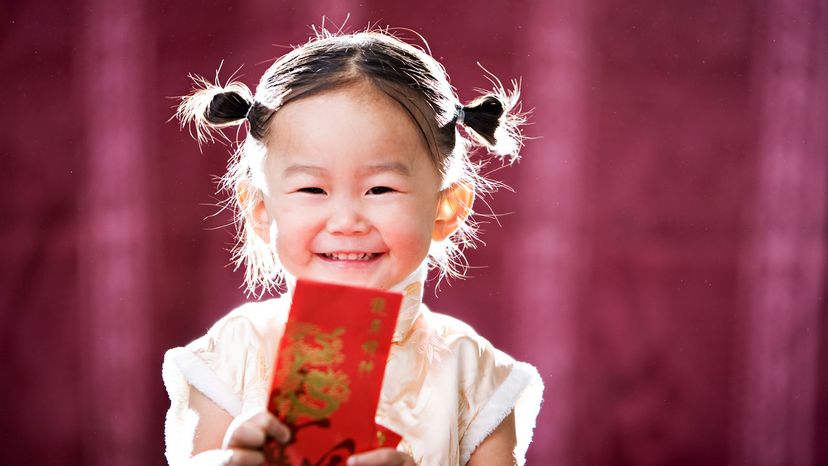Chinese New Year Family Traditions

Gathering as many generations of the family as possible for the holiday is the strongest tradition associated with Chinese New Year. Many Chinese have moved to big cities like Beijing, and New Year is the time they return to the villages where they grew up to be with their extended families. On New Year's Eve, when gathering for the first big family meal of the season, they dress in new clothes, often something red, the color associated with New Year. Then at midnight, family members fling open doors and windows to let the old year out.
Since Chinese New Year is also a time for gift giving, another common tradition involves gifting red envelopes that contain "lucky money." Usually married couples give these gifts to children and single people, and when they go out, they carry envelopes to hand out to the children or the servants of families they visit. The money given in an envelope can be a token amount, such as a few dollars, or a more substantial gift, and it has symbolic as well as monetary value. For example, the amount should be an even number, and the numbers eight and 88 are considered especially lucky because the word for "eight" sounds like a word that means "prosperity" [source: Welch].
Advertisement
Remembering and showing respect for ancestors was once an important part of Chinese New Year celebrations, too. Chinese families placed food and burned incense on home altars devoted to those who had passed on. They also said prayers to departed relatives, who they still considered part of the family. These ceremonial customs are less common now, but generally showing respect for ancestors and elders -- by visiting grandparents, for example -- is still a part of New Year tradition in many Chinese homes.
Food is also an essential part of any Chinese New Year celebration. On the next page, we'll explore some of the delicious items that are associated with the holiday.